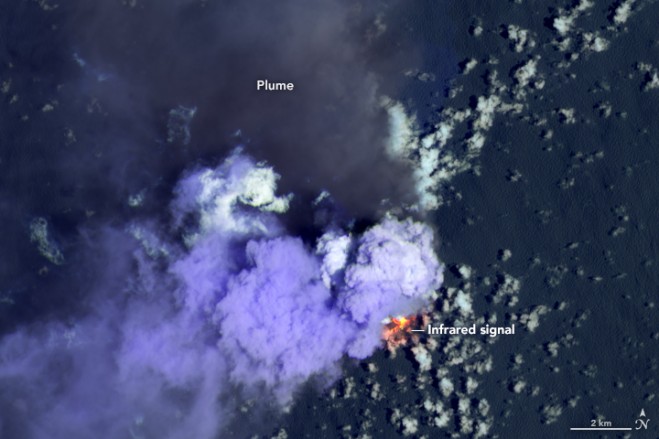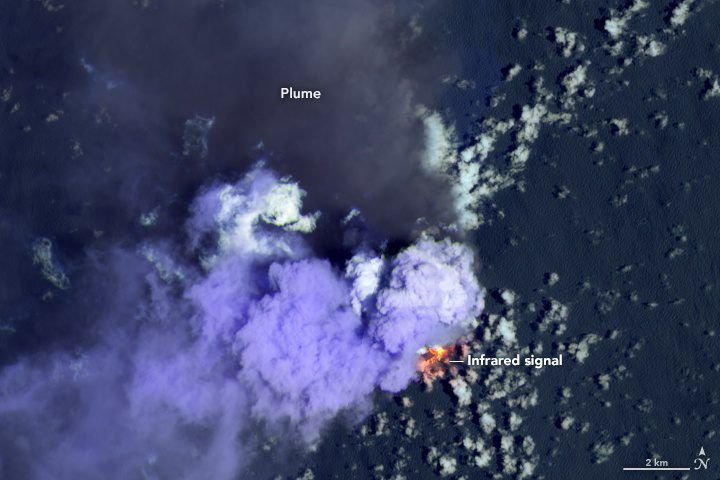

A young volcanic island has been growing in the western Pacific Ocean since 2013. Since mid-June 2020, it has been going through a vigorous growth spurt. Images show some of the latest eruptive activity at Nishinoshima, a volcanic island about 1,000 kilometers (600 miles) south of Tokyo.
This false-color image, acquired by Landsat 8 on July 4, 2020, combines shortwave infrared and visible wavelengths (bands 7-6-4). It reveals the heat signature of erupting lava and the relative coolness of the dark ash plume (blowing north). The bright purple clouds close to the island could be steam from the volcano or from lava vaporizing seawater.
Image Credit: NASA Earth Observatory image by Lauren Dauphin, using MODIS data from NASA EOSDIS/LANCE and GIBS/Worldview.